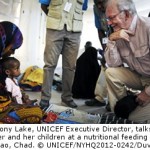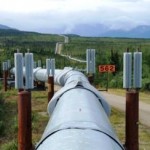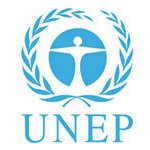
Barcelona – The World Bank’s annual review of the global carbon market shows that 2010 was a watershed year as the market ended five years of robust growth with a slight decline compared to 2009. The “State and Trends of the Carbon Market 2011”, released June 1 at CARBON EXPO 2011 in Barcelona, shows that the total value of the global carbon market was estimated to be US $ 142 billion last year.
The report’s authors noted that several reasons help to explain the decline, including the continuing lack of clarity about the market after 2012 and the loss of political momentum on setting up new cap-and-trade schemes in several developed economies. Some buyers from industrialized countries, which in previous years had reached or surpassed targets, consequently made fewer purchases in 2010. As well, lingering effects of the recession in several industrialized countries led to lower greenhouse gas emissions, easing emissions reduction compliance obligations.
Furthermore, the primary Certified Emission Reductions (CERs) market, which accounts for the bulk of project-based transactions, fell by double digits for a variety of reasons, including lower demand for credits and competition from more predictable assets (Assigned Amount Units and secondary CERs). The CDM market is now at its lowest level since the Kyoto Protocol entered into force in 2005, having dropped by 46% to an estimated US $ 1.5 billion in new project-based transactions. Similarly, other carbon markets also declined or stayed at their plateau. Nevertheless, cumulatively, primary offset transactions have reached almost US $ 30 billion since 2005 and are expected to have catalyzed much larger resources, mostly from the private sector.
“The global carbon market is at a crossroads. If we take the wrong turn, we risk losing billions of lower cost private investment and new technology solutions in developing countries,” said Andrew Steer, World Bank Special Envoy for Climate Change. “This report sends a message of the need to ensure a stronger, more robust carbon market with clear signals.”
‘State and Trends of the Carbon Market 2011’ shows that, relative to each other, EU Allowances (traded under the EU Emissions Trading Scheme, ETS) remain the largest segment by far, with 84% of the total value of the carbon market. Taking secondary CDM transactions into account, the value of the market driven by the ETS reached 97% of the global market value.
The authors of the report predict that, in the next two years, the difference between gross demand for and the cumulative supply of carbon credits generated under the Kyoto flexibility mechanisms will be slightly less than US $ 140 million. Virtually all demand will be from European governments. Beyond 2012, although the potential demand for emission reductions could reach 3 billion tons or more, the only substantial and unconditional demand to date comes from Europe, estimated at 1.7 billion tons. The supply available between 2013 and 2020, through existing projects, is seen as sufficient to fill that demand, leaving little incentive for project developers to invest further and create a future supply of emission reductions.
The fall in market value was contrasted with what was generally seen as the successful outcomes of negotiations at the UN Climate Change Conference in Cancun in December which resulted in relatively more positive market sentiment.
Although some opportunities for strengthening regulatory frameworks were missed in industrialized countries, national and local low-carbon initiatives gathered strength and offered hope.
“Carbon market growth halted at a particularly inopportune time: 2010 proved to be the hottest year on record, while global emission levels continued to rise relentlessly,” said Alexandre Kossoy, World Bank Senior Financial Specialist. “At the same time, other national and local low-carbon initiatives have picked up noticeably in both developed and developing economies. Collectively, they offer the possibility overcome regulatory uncertainty and signal that, one way or another, solutions that address the climate challenge will emerge.”
In the face of lagging demand, the World Bank has undertaken a number of initiatives to give confidence to a post-2012 carbon market. The Partnership for Market Readiness, launched in Cancun in December 2010, aims to support the trend of national mitigation efforts using market approaches. A number of the World Bank’s carbon funds and facilities, such as the Carbon Partnership Facility, the second tranche of the Umbrella Carbon Facility, and a new facility for low-income countries currently under development, also respond to future needs by supporting scaled up mitigation and purchasing carbon credits beyond 2012. Furthermore, the Forest Carbon Partnership Facility is supporting REDD+ initiatives which, to date, have not been included under the CDM. The Bank sees carbon markets as an important and versatile tool to provide incentives for a shift to lower carbon development paths.
‘State and Trends of the Carbon Market 2011’ was released at CARBON EXPO 2011, the largest carbon fair in the world with more than 3,000 representatives from governments, private sector and civil society organizations, involved in greenhouse gas emission reduction transactions around the world.
For the electronic version of this report, please visit the website: www.carbonfinance.org
Source: The World Bank.














